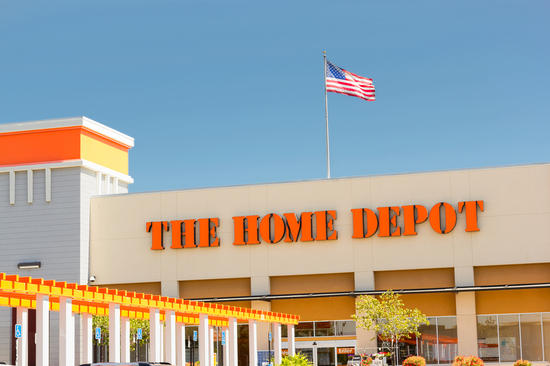Home Depot Inc. (HD, Financial) and Lowe's Companies Inc. (LOW, Financial) thrived during the Covid-19 pandemic as housing demand increased and people undertook more home improvement projects.
However, in my view, both companies also look set to continue growing even as the pandemic eases.
This week, the two companies both reported solid financial results for the first quarter of 2021. Home Depot reported net income of $3.86 per share, up from $2.65 a year earlier, and announced a $20 billion buyback program. Net sales were up 32.7% to $37.5 billion. Meanwhile, Lowe's reported net income of $3.21 per share, up from $1.32 per share a year ago. Comparable sales were up 25.9% from a year earlier.
The results of both companies easily exceeded analyst expectations. Nonetheless, investors sold off both companies' shares, as was the case back in February when the two companies reported strong results for the prior quarter.
I believe the selloffs are mostly due to investors' expectations that sales of home improvement supplies will taper off once the Covid-19 pandemic tailwind disappears. However, the past two quarters have already proven the naysayers wrong for a couple of reasons.
One of them is that home improvement and home sales are highly cyclical sectors, and their growth or decline will largely be determined by the overall economy. The pandemic was an exception due to the combination of historically low interest rates and loan forbearance as well as the balance sheet strength of banks, among other factors.
Then there's the big jump in household savings during the pandemic, which could help finance further spending on home improvements. Meanwhile, the two companies have plenty of moats to defend their economic castle from the competition. For example, there's bundling, which is the packaging of different products to create unique consumer offerings. Then there's the integration of their supply chain activities, which creates a formidable barrier of entry for new competitors.
There's also the merging of online and offline sales, which give them an advantage over online-only competitors.
Barriers to entry have allowed the two companies to maintain high economic profits (the difference between return on invested capital (ROIC) and weighted average cost of capital (WACC)) over the last decade. Currently, Home Depot's economic profit stands at 30%, and Lowe's 15%. Together with revenue growth, economic profit determines the value the company creates.
| Company | ROIC | WACC | ROIC-WACC (Economic profit) |
| Home Depot | 36.67% | 6.67% | 30% |
| Lowe's | 23.25% | 8.25% | 15% |
Meanwhile, the two companies have been growing their revenues and profits at healthy rates and paying good dividends:
| Company | Home Depot | Lowes |
| Three-year Revenue Growth (%) | 12.9 | 13.5 |
| Three-year Ebitda Growth (%) | 10.8 | 14.1 |
| Current Operating Margin (%) | 22.23 | 10.77 |
| Annual Dividend (%) | 2.18 | 1.42 |
| Market Price | $315.97 | $193.31 |
Economic profit is also a measure of a company's competitive advantage. A rising economic profit indicates that a company's advantage is strengthening, while a declining economic profit indicates that a company's competitive advantage is eroding.
Both Home Depot and Lowe's economic profits have been rising over time. Home Depot's economic profit increased from 3% in 2010 to 26% in 2020. Lowe's economic profit increased from -1% in 2010 to 15% in 2020.
Thus, I remain confident that shares of Home Depot and Lowe's can both continue to rise as the companies thrive in the coming months.
Disclosure: I own shares of Home Depot and Lowe's
Not a Premium Member of GuruFocus? Sign up for a free 7-day trial here.
